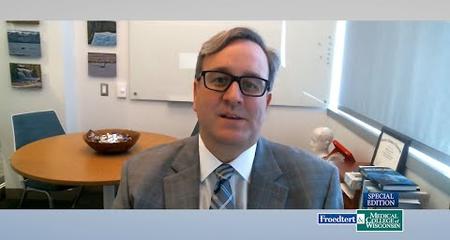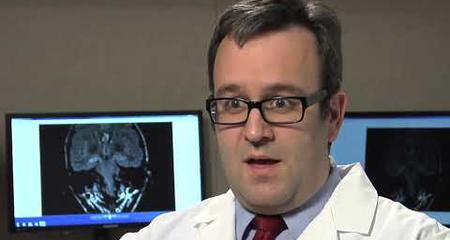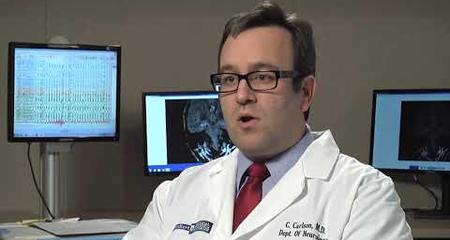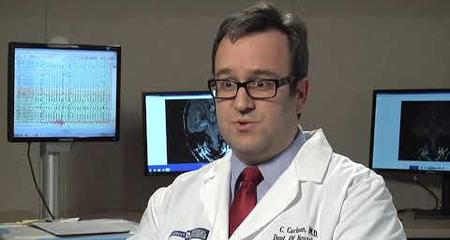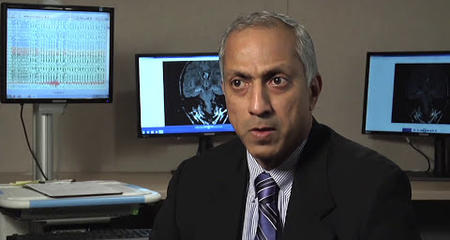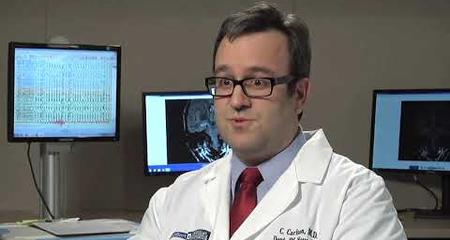Treatment begins with a thorough evaluation of each patient's symptoms, seizure history and prior medical care. An epileptologist (a neurologist who specializes in seizures) reviews this information with each patient and discusses further diagnostic and treatment options. Video-EEG monitoring, magnetic resonance imaging (MRI) and other neuro-imaging tests confirm the diagnosis and suggest the best treatment options for each person.
These options include new anti-epileptic medications, "awake" surgery to remove the part of the brain causing seizures and implanting the Vagus nerve stimulator — a tiny device that sends an electrical signal to stop seizures.
Medication is widely used as the first step in treatment of epilepsy. Clinicians at the Comprehensive Epilepsy Program have a vast amount of knowledge of the latest drug therapies available depending on the type and frequency of the patients' seizures. This knowledge is essential in optimally treating persons with epilepsy, as eight new medications have been released in the past few years.
More advanced treatment is available when medication doesn't effectively manage epilepsy.
- Deep Brain Stimulation (DBS) — DBS is the latest treatment option for patients living with epilepsy. Patients who are candidates for DBS will have tried at least three different medications without success. With DBS, a small neurostimulator is surgically placed under the skin to delivery therapy. It sends electrical impulses through leads that are placed in areas of the brain where seizures occur.
- RNS System — This new treatment consists of an implanted neurostimulator that detects an impending seizure and delivers imperceptible electrical stimulation before it occurs. The device also transmits data via the Internet, allowing physicians to review activity without an office visit.
- Visualase® — This precise MRI-guided laser ablation technique reduces hospital stays, scarring and hair loss.
- Vagus Nerve Stimulator — The stimulator is implanted in the left side of the chest and connected to the Vagus nerve. When patients or witnesses realize a seizure is about to occur, they use a magnet to activate the stimulator and stop the seizure.
- Epilepsy Surgery — Corrective surgery is conducted with the help of brain mapping — including brain mapping during "awake" surgery.
One of the first epilepsy programs in Wisconsin, the Comprehensive Epilepsy Program's physicians have performed more "awake" surgeries than any other program in the state. The program has also assisted more adult patients than any other Wisconsin hospital using the Vagus Nerve Stimulator.
